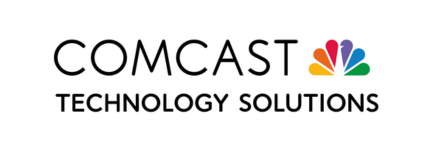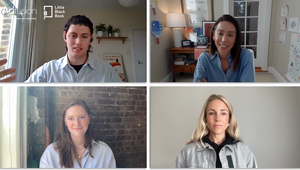
Content that Connects: Jillian Gibbs Dispels Production Myths

Any piece of content for a brand means little if it never manages to connect with its target audience, a statement to ponder in this new interview series from Comcast Technology Solutions and Little Black Book.
Over the course of this series, we’ll be speaking to some of advertising’s most respected production leaders to delve into how emerging themes in production, such as data-fuelled production, more lo-fi shooting technology, remote filming, and evolving feelings towards the value of production all feed into creating content that matters to customers and works for brands.
Today, LBB’s Adam Bennett is speaking with Jillian Gibbs, founder and global CEO of APRCO. Whilst she is able to draw upon an incredible depth and scope of experience in the industry, it’s the insights gleaned from outside the production bubble that might surprise you most. Here, Jillian reflects on the fascinating evolution of ‘craft’, how producers are leveraging data to their advantage, and why she needs to thank Jon Favreau…
LBB> Jillian, what first led you into the production industry, and what’s the most enjoyable aspect of your role today?
Jillian> Early on, I studied theatre and singing because I wanted to sing jingles in the advertising industry. I soon learned that performing was not a career I wanted to go into, but that production came natural to me both in front of the camera and behind the scenes. I loved how all the pieces and parts of a production came together - from the planning to the rehearsals, to the performance, and wrap.
On that note, the most enjoyable aspect of my role today is making a difference to all the stakeholders and helping them to succeed. I love dispelling myths in the advertising production space and teaching. There is a big gap in the industry related to training; so many people have learned things incorrectly and believe them to be true that it can be detrimental to them and to our clients.
LBB> I’ve read that, before getting into this industry, you worked as an undercover detective. Is this true and, if so, have you found there to be any crossover in skillset between sleuthing and your current role in the world of production?!
Jillian> Yes, this is true, and thank you for doing your homework! I was a plant in a Wall Street firm during one of my college summers, and my role was to determine who was stealing from the company or doing drugs on the job. It was fascinating and often made me feel uncomfortable. I never caught anyone, thanks be!
I do believe that every experience shapes us. If I reach, I can see that our role as consultants in the marketing industry is to ensure that clients and their stakeholders are being heard, understood, and have full transparency into their ways of working when it comes to creative production. That sleuthing that we do as consultants is founded in having years and years of experience that we can impart on investigating any situation. How’s that for connecting an early experience with what I do today?!
LBB> APR first started providing production expertise to clients more than 20 years ago. Before we talk about recent issues and trends, can you tell us what’s stayed the same? Are there any challenges which you’ve found to be re-occurring over those two decades?
Jillian> Ah, yes, this is interesting. Change has been the constant. I was part of converting the Snuggle Bear and Ms. Butterworth’s into CGI characters to push the technology of fur and glass. That took commitment, and I was dedicated to the change that was inevitable. I opened the doors for experimentation until the technology caught up with the creative need.
The advertising industry is experiencing significant changes today as clients have taken control of their budgets and have brought much of their creative production in-house, especially for social and digital, but also for TV ads. I’ve observed much change over the years, and the biggest recurring challenge is change management. The WFA states that 40% of marketers plan to change agencies, yet 60% will keep their agencies and work closer with them to ensure their success. This is interesting and I believe the key to success is to invest in the people. It’s the people that make creativity work best.
With the great resignation, quiet quitting, and the pace of change, it takes less time to develop people than to completely change agencies. I’ve observed that if we keep motivating and celebrating the people, the work gets better. (Of course, there are times when changing agencies is the right thing to do, but it’s important in either scenario to invest in change management, coaching, and training of the people involved in doing the work.)
LBB> Today, can you tell us how our industry’s traditional concept of ‘craft’ is connecting with data?
Jillian> There are a few areas including understanding the consumer better to meet them where they are, more creative tools generating dynamic content using artificial intelligence, and building relationships with consumers to develop content.
Using artificial intelligence to create content is one of the next big things in the creative production space, and we’ve seen some experimentation in this area in magazine art and art competitions. In addition, collecting performance data and tracking spend data is key to planning, which is why having a production strategy and pulling production up to the planning process is critical. Data is key to determining what type of assets to create and what NOT to create, where to place the assets, and how to measure their success. Quite frankly, there is disruption needed in how clients manage their marketing investments. For too long, media, creative, and production data have been siloed and it’s time to connect them so that marketers can have a holistic, 360-view of their investments and a total ROI formula.
LBB> And, for those production companies who successfully connect craft with data, how does that help them to create more impactful content for brands?
Jillian> The traditional production company is all about craft and when those companies are included in the conversation around what’s working well and what’s not, they can help produce more of what’s working and less of what’s not. They can be part of the strategy. The newer production companies or content engines that are producing assets using automation tools and AI are an extremely important ingredient in today’s creative production ecosystem, and are best utilised for content at scale. Currently, the traditional production companies and the automation/AI companies are very different business models with different approaches, talent, and craft. I think we have to speak of them separately for now, yet ultimately find a way to integrate them.
LBB> Zooming out a little, how would you articulate the value of craft - or quality production more broadly - to a brand at a time where we’re highly saturated with channels and content?
Jillian> The one thing that our nearly 80 clients have in common with each other, even though they are in different industry categories, is that they put quality of production and value of craft at the top of their priority list. And what’s trending now is more high-quality content produced for all platforms from TV to ecommerce. Consumers expect more, and the tools and technology in the industry are there to deliver quality craft.
LBB> There’s been a lot of talk in recent years about the transformative effects of virtual production technologies. In what ways do you see virtual production changing what’s possible in the industry, and do you expect that trend to continue into the near future?
Jillian> There is no doubt in my mind that Virtual Production is a GAME CHANGER and the next great innovation since offline editing came to be in the 80’s. This is innovation that is to be celebrated and incorporated into every advertiser’s production strategy. Thanks to Epic Games, their Unreal Engine, and Jon Favreau for the work he did on the Mandalorian during early Covid days. Jon and his team have been instrumental in helping to further develop the software and the process around virtual production and I am so grateful, as it is helping many of our clients. In addition, since we don’t have to fly around to multiple locations, VP helps to support ESG (environmental, social, and governance) commitments for agencies and clients - specifically around sustainability and reducing the carbon footprint of a production. It is a really important consideration, and I would love to thank Jon someday for pushing this innovation forward!
LBB> Broadly speaking, where should companies be investing in the production process in order to drive the best value and output?
Jillian> Broadly speaking, I recommend investing in the people, the processes, and the technology in order to drive the best value and output.
LBB> On a final note - if you could travel back in time to the moment you founded APR, what one piece of advice would you give yourself and why?
Jillian> I would say to my newly divorced 33-year-old self, “You’re about to embark on a journey that will not only change you significantly, but change the industry.” I did not know then what I know now, which is that I would be able to positively influence the industry and the people in it. I love the work that I do and I am in a state of flow when influencing the people and the industry. I didn’t realise my impact for a long time and now, I’m having the time of my life with full awareness of my influence, and I feel connected and so inspired.
Thank you for this interview. Oftentimes, the consultants and the services companies are overlooked in the creative process, and I appreciate LBB’s and Comcast Technology Solutions’ approach to reaching into all areas of the industry for your readers. Many thanks!















